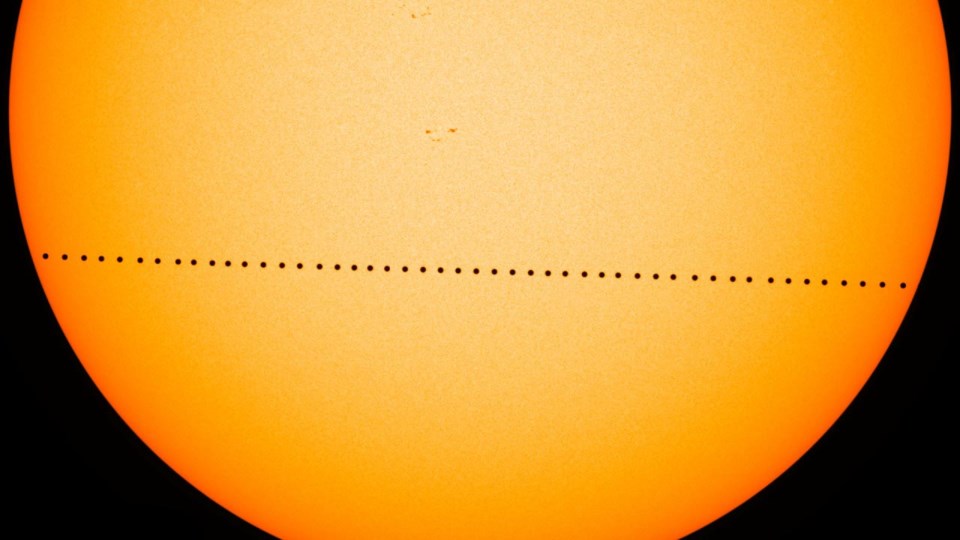Weather permitting, Science North is offering a chance to observe Mercury in Transit on Monday, from 9 a.m. to 1 p.m. using their solar telescopes set up outside the front entrance.
The event is being put on together with Royal Astronomical Society of Canada, and if it's too cloudy, there will be a live stream in Space Place on the 4th floor.
A rare event that happens about 13 times every 100 years, Mercury will be passing between the Earth and the Sun. From here on Earth, that means we'll see a little black spot slowly crossing the disc of the Sun. However, because Mercury is so small, you won't be able to see it just with solar-filtered eclipse glasses.
Remember, you're never supposed to look at the sun because it'll blind you, and that goes doubly for looking at the sun through any magnifying device, like binoculars or a telescope.
However, some binos and scopes have filters on the front that block out enough sunlight that you can safely look through them, including the solar telescopes at Science North.
Because of the slight difference in the orbits of Mercury and the Earth, Mercury transits only happen about 13 times per century. The next one isn't until 2032, so this is the last chance to see the tiny dot of Mercury traversing the sun.
“Viewing transits and eclipses provide opportunities to engage the public, to encourage one and all to experience the wonders of the universe and to appreciate how precisely science and mathematics can predict celestial events,” Mitzi Adams, a solar scientist in the Heliophysics and Planetary Science Branch at NASA’s Marshall Space Flight Center in Huntsville, Alabama, said in a post on NASA’s website. “Of course, safely viewing the sun is one of my favourite things to do.”
This year’s transit will be widely visible from most of Earth, including the Americas, the Atlantic and Pacific Oceans, New Zealand, Europe, Africa, and western Asia.
Mercury’s tiny disk, jet black and perfectly round, covers a tiny fraction of the sun’s blinding surface — only 1/283 of the sun’s apparent diametre.
Scientists have been using transits for hundreds of years to study the way planets and stars move in space. Edmund Halley used a transit of Venus in 1761 and 1769 to determine the absolute distance to the sun. Another use of transits is the dimming of sun or star light as a planet crosses in front of it. This technique is one way planets circling other stars can be found. Scientists can measure brightness dips from these other stars (or from the Sun) to calculate sizes of planets, how far away the planets are from their stars, and even get hints of what they’re made of.
